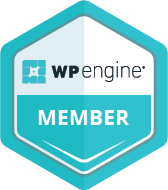Creating compelling content that engages your audience is a cornerstone of digital marketing. But without the right strategy, even the best content can get lost in the noise.
If your goal is to improve search visibility and attract targeted traffic, then focusing on Engaging Content Strategies for Search Ranking is essential.
But what does that really look like in practice?
From optimizing WordPress sites for technical SEO to crafting content that speaks directly to user intent, let’s break down actionable content strategies that can significantly impact your search rankings.
Why Engaging Content Matters for SEO
Search engines don’t just rank content—they rank content that people find valuable. That means creating content that is engaging, informative, and optimized for both users and search engines. This is where Engaging Content Strategies for Search Ranking come into play.
Engaging content serves a dual purpose:
- It keeps users on the page longer, reducing bounce rates and increasing dwell time—both of which signal quality to search engines.
- It attracts backlinks and social shares, which can amplify your content’s reach and strengthen its authority.
But here’s the kicker: content alone isn’t enough. If your site isn’t technically sound, all the compelling content in the world won’t drive the traffic you’re after.

The Intersection of Technical SEO and Engaging Content
You can write the best content in your niche, but if your WordPress site has technical issues, it’s like trying to drive with the parking brake on. Here are some overlooked technical SEO elements that can impact content performance:
1. Page Speed Optimization
Content that takes too long to load won’t engage anyone. Optimize images, minify CSS and JavaScript, and leverage caching to improve load times. Tools like Google PageSpeed Insights can help identify slow-loading assets.
2. Structured Data and Schema Markup
Implement schema to provide search engines with additional context about your content. This can improve how your content appears in search results, making it more engaging and clickable.
3. Canonicalization
If you’re repurposing content across multiple pages or using pagination, canonical tags are essential to prevent duplicate content issues. A good Engaging Content Strategies for Search Ranking plan should include a review of canonical tags to ensure they point to the primary version of each page.
4. Internal Linking Structure
Linking to other relevant content within your site can keep users engaged and encourage deeper exploration. It also helps search engines understand the structure of your site and the hierarchy of content.
5. Mobile Optimization
With the majority of searches now happening on mobile devices, ensuring your content is mobile-friendly isn’t optional. A fully responsive design and optimized images are crucial for both user engagement and search ranking.
Crafting Content That Engages and Ranks
Now that we’ve covered the technical foundation, let’s shift to content creation. Here are specific Engaging Content Strategies for Search Ranking that you can implement right away:
1. Create Data-Driven Content
Data-backed content not only establishes credibility but also attracts backlinks. Use tools like Google Trends, Ahrefs, or SEMrush to identify trending topics and build content around emerging search queries.
Pro Tip: Incorporate original data, case studies, or unique insights that can’t be found elsewhere. This makes your content more shareable and linkable.
2. Answer Specific Questions
Content that answers specific user questions tends to rank well for long-tail keywords. Use People Also Ask boxes and tools like AnswerThePublic to identify common questions in your industry.
Example: If your target audience is searching for “How to optimize WordPress for local SEO,” write a comprehensive guide that addresses that specific query.
3. Repurpose High-Performing Content
Look at your top-performing content and find ways to repurpose it. Turn a popular blog post into a LinkedIn carousel, a YouTube video, or an infographic. Repurposing extends the life of your content and increases its reach.
The Power of Content Clusters for Search Ranking
A content cluster strategy can significantly improve search visibility. Here’s how it works:
- Pillar Content: Create a comprehensive piece of content on a broad topic, such as “The Ultimate Guide to Technical SEO.”
- Cluster Content: Develop related posts that link back to the pillar content, such as “5 Technical SEO Issues Impacting WordPress” or “How to Resolve Redirect Chains for Better SEO.”
- Internal Linking: Connect all cluster content to the main pillar, reinforcing the topic’s authority and structure.
This strategy not only keeps users engaged but also signals to search engines that your site is a comprehensive resource on the subject.
Local SEO and Content Strategy
If your target audience is local or regional, your content strategy should reflect that. Here’s how to align content with local SEO:
- Incorporate Local Keywords: Instead of generic phrases like “SEO services,” use location-specific keywords like “SEO services in Salt Lake City.”
- Create Localized Content: Write blog posts that address local issues, events, or case studies relevant to your audience.
- Optimize GMB Listings: Ensure that your Google Business Profile is fully optimized and includes a link to your latest content.
Measuring Content Engagement and SEO Impact
Engaging content is great, but without measuring its impact, you’re flying blind. Here’s what to track:
- Bounce Rate (Engagement Rate): Are users sticking around to read or leaving quickly?
- Average Time on Page: Are they engaging with the content, or just skimming?
- Scroll Depth: Are they making it to the end of your content?
- Backlinks and Shares: Is your content being shared and linked to by other sites?
Monitoring these metrics can help you refine your Engaging Content Strategies for Search Ranking over time.
It’s Not Just About Content
Yes, creating compelling content is essential, but without the right technical foundation, it won’t reach its full potential. Think of it like building a house. You can paint the walls and decorate every room, but if the foundation is cracked, it’s only a matter of time before problems arise.
That’s why my approach to content strategy always includes a technical SEO audit as the first step. If you’re serious about improving search visibility and user engagement, it’s time to take a closer look at both the content and the platform it’s built on.
Ready to elevate your content strategy?
Connect with me on LinkedIn or reach out for a free consultation.
Let’s make sure your content not only gets seen but gets results.
Schedule a consultation
or
Connect with me on LinkedIn for more tips like these.

